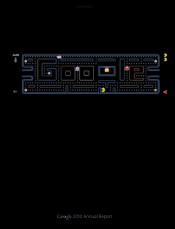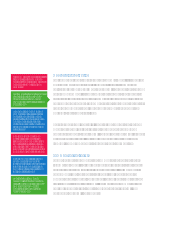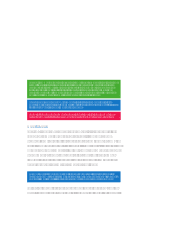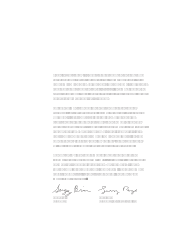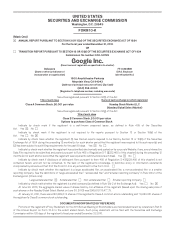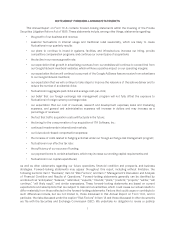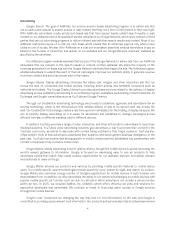Google 2010 Annual Report Download - page 7
Download and view the complete annual report
Please find page 7 of the 2010 Google annual report below. You can navigate through the pages in the report by either clicking on the pages listed below, or by using the keyword search tool below to find specific information within the annual report.to be overcome in order to stream video to small, low-power wireless
devices. Increasingly, technology is moving to the worlds ve-billion-
plus mobile phones, thereby democratizing information well beyond
the PC. The more sophisticated functionality is typically available on
the fast-growing smartphone segment, which shipped over 300 million
devices last year alone. Android, our own mobile operating system
for smartphones, rst shipped only two years ago, and now it's the
most used in the world with over 300,000 devices activated daily.
New Internet-connected screens, such as tablets and televisions, also
provide an ever-growing base to deploy these technologies.
And new mobile applications are springing up everywhere. Just a
few years ago mapping and navigation were the domain of specialized
devices. Today, more than 150 million people use Google Maps every
month on their mobile phones, and nearly 10 million now use Google
Latitude to connect with their friends and families on maps.
Moreover, via mobile phones, what were once considered the far-
ung corners of arti cial intelligence research have now reached the
mainstream. For example, Google Goggles utilizes leading edge machine
vision to identify and learn more about objects and places by sight. Our
Voice Actions feature enables millions of people to use state of the art
speech recognition to more easily interact with their phones to dictate
emails or searches. With Google Translate on mobile phones, people can
nowliterallyspeak in one language and have it repeated in another.

